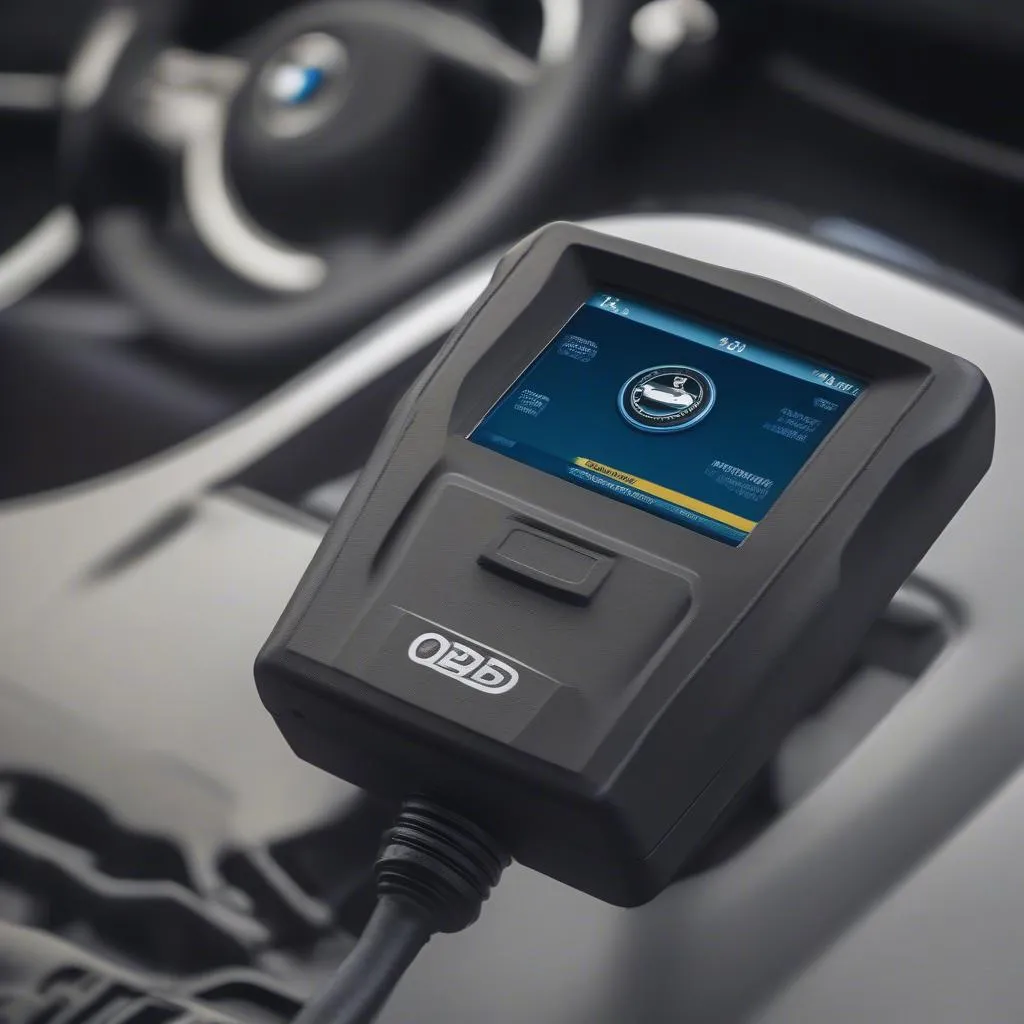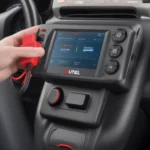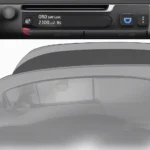Experiencing frustration because your OBD2 scanner won’t connect to your BMW’s ECU? This is a common issue, and you’re not alone. There are several reasons why this might happen, ranging from simple connection problems to more complex software or hardware incompatibilities. This guide will walk you through the common causes and provide effective solutions to get you back on track with diagnosing your BMW.
Understanding the Connection Between Your OBD2 Scanner and BMW’s ECU
Before we delve into the troubleshooting steps, let’s briefly understand how your OBD2 scanner communicates with your BMW’s ECU (Electronic Control Unit).
The OBD2 port, usually located under the driver’s side dashboard, acts as the communication gateway. When you plug in your scanner, it attempts to establish a connection with the ECU to access diagnostic information. This information includes fault codes, sensor data, and other vital parameters that help identify and diagnose problems within your vehicle’s systems.
Common Reasons for OBD2 Scanner Connection Issues with BMWs
Here are some of the most frequent culprits behind your OBD2 scanner’s failure to connect to your BMW’s ECU:
- Compatibility Problems: Not all OBD2 scanners are created equal. Some scanners, especially generic ones, might not support all BMW models or specific ECUs within a model.
- Faulty OBD2 Port or Wiring: A damaged, loose, or corroded OBD2 port on your BMW can disrupt the connection. Similarly, damaged wiring leading to the port can also cause communication failures.
- Blown Fuse: The OBD2 port’s functionality often relies on a specific fuse in your BMW’s fuse box. A blown fuse can interrupt power supply to the port, preventing the scanner from connecting.
- Software Issues: Outdated firmware on your OBD2 scanner or incompatible software versions can lead to communication problems with your BMW’s ECU.
- BMW-Specific Protocols: BMWs utilize specific communication protocols that your OBD2 scanner needs to support. Scanners lacking these protocols may encounter connection issues.
Troubleshooting Your OBD2 Scanner Connection
Now that you have a better understanding of the potential causes, let’s move on to troubleshooting the problem:
-
Check for Obvious Physical Issues: Start by visually inspecting the OBD2 port on your BMW. Look for any bent or broken pins, debris, or signs of corrosion. If you find any issues, carefully try to rectify them or consider seeking professional help.
-
Verify Fuse Functionality: Consult your BMW’s owner’s manual to locate the fuse box and identify the specific fuse associated with the OBD2 port. Use a fuse tester or visually inspect the fuse for any signs of a break in the filament. Replace the blown fuse with a new one of the correct amperage.
-
Test the OBD2 Scanner on Another Vehicle: To rule out the possibility of a faulty scanner, try connecting it to another vehicle (ideally a different make and model). If it connects successfully, the issue likely lies with your BMW or compatibility. If it fails to connect to another vehicle, the scanner itself might be the problem.
-
Ensure Proper Scanner Compatibility: Double-check that your OBD2 scanner explicitly states compatibility with your specific BMW model and year. Research online forums or contact the scanner manufacturer if you’re unsure.
-
Update Scanner Firmware: Visit the manufacturer’s website for your OBD2 scanner and check for any available firmware updates. Download and install the latest firmware version following the instructions provided. Outdated firmware can often cause communication problems with newer vehicles.
Specific Considerations for BMWs
BMWs can be a bit more particular when it comes to OBD2 communication. Here are some specific tips to keep in mind:
-
Ignition Position: In some BMW models, the ignition needs to be in the “on” or “accessory” position for the OBD2 port to be active. Make sure you have the ignition turned on before attempting to connect your scanner.
-
BMW-Specific Scanners: While generic OBD2 scanners can read basic engine codes, investing in a BMW-specific scanner, such as the VGATE iCar Pro OBD2 Scanner WiFi for BMW, can provide more comprehensive diagnostics, including access to module-specific codes and advanced functions.
Seeking Professional Help
If you’ve exhausted all troubleshooting steps and your OBD2 scanner still won’t connect to your BMW’s ECU, it’s best to consult a qualified mechanic or BMW specialist. They have the expertise and specialized tools to diagnose and resolve more complex electrical or software issues that might be hindering the connection.
Frequently Asked Questions
Q: Can a low car battery prevent my OBD2 scanner from connecting?
A: Yes, a significantly low battery can sometimes disrupt the OBD2 connection. Ensure your BMW’s battery has sufficient charge before attempting to connect the scanner.
Q: What if my OBD2 scanner connects but doesn’t read any codes?
A: This situation might indicate a communication problem, a faulty scanner, or that there are no active fault codes stored in your BMW’s ECU.
Q: Can I damage my BMW’s ECU by using an incompatible OBD2 scanner?
A: While rare, using a completely incompatible scanner or forcing connections can potentially damage the ECU. Always double-check compatibility and handle the scanner and port with care.
Need More Help?
For further assistance with OBD2 scanner issues, specific BMW model troubleshooting, or to explore a wide range of OBD2 scanners, visit our website OBDFree. We offer a wealth of information, reviews, and resources to help you make informed decisions about your vehicle’s diagnostics.
If you’re experiencing a “Foxwell OBD2 scanner not communicating with BMW E53” issue or need advice on choosing the right BMW E46 OBD2 scanner, we’ve got you covered.
Still have questions or need expert guidance? Don’t hesitate to contact us via WhatsApp at +1(641)206-8880 or email us at [email protected]. Our dedicated support team is available 24/7 to provide personalized assistance and ensure you get back on the road with confidence.


